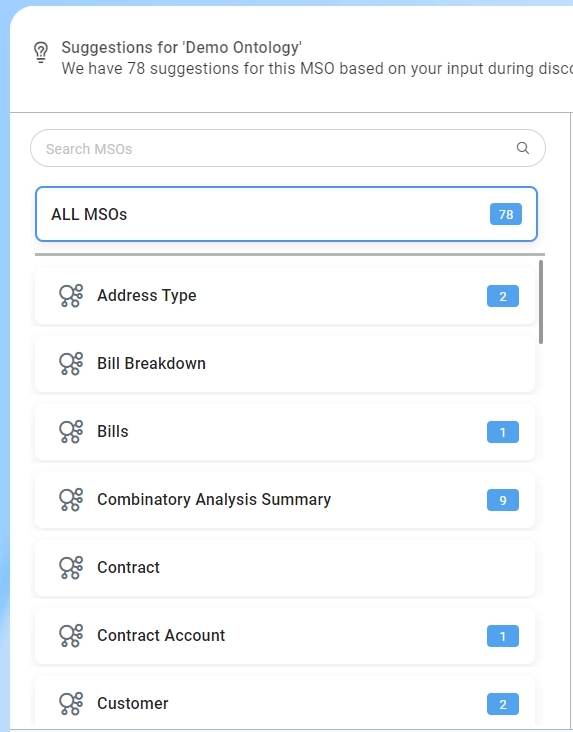Notifications
Intended audience: USERS DEVELOPERS ADMINISTRATORS
AO Platform: 4.3
Overview
The AO Platform provides Notifications relative to user or system events. Notifications are generally considered to belong to one of these three categories:
Immediate confirmation of user actions
Important/urgent system events
User, system, or scheduled events/tasks
Immediate Confirmation of User Actions
This type of notification typically appears after a user saves, deletes, or updates something important. The notification does not require any further action and will disappear after a few seconds.
Example

User, System, or Scheduled Events/Tasks
In Notification Slideout Panel
This type of notification typically appears in the dedicated Notification panel as a result of background tasks starting, ending, and/or being queued, - or users with the same role as the current user sharing or commenting on something.
Some examples of this type of Notification:
Creating the complete Ontology after the user clicks Finish on the Summary page.
Creating Statistics for all selected tables during Ontology creation.
Discover Words, Discover Relationships, etc… for MSOs.
User Comments on Easy Answers Reviewer page.
Training a Machine Learning Model in Model Composer
The Notification panel opens when the user clicks the Bell icon in Header.
Notifications in the Notification panel include:
a color representing the state of the Notification
blue - FYI
green - success
red - failure
yellow - mixed result
an Icon representing the User/Solution/System Component, eg. Scheduler that caused the Notification.
the Notification title.
a short Description for Notification, often a success or failure message.
a date/time stamp for when the Notification was raised.
the component/module that the Notification is raised for.
If a link is available for Notification, when the user clicks the Notification in the dropdown list, the linked page will open on a new Browser tab.
User Options
Filter - dropdown to select Type of Notification to show:
User Comments
User Annotations
User Sentiments
Statistics Tasks
Ontology Discovery Tasks
Model Training Tasks
Shared with me/Role
Scheduler Events
Dismiss All - click to delete all Notifications.
Delete - click the “x” icon on hover of a Notification to delete it.
Link - click the “link” icon (where available) of a Notification to open a page on a new Browser tab for details of the specific Notification.
Close - click the “x” in the top/right corner of the Notification Panel to close it. The Notification panel can also be closed by clicking the Bell icon in Header again.
Resize - drag the left side of the Notification panel left/right to widen/narrow the panel.
Examples
Discovery Notifications | Quick Insights Notifications | Download Data Notifications |
|---|---|---|
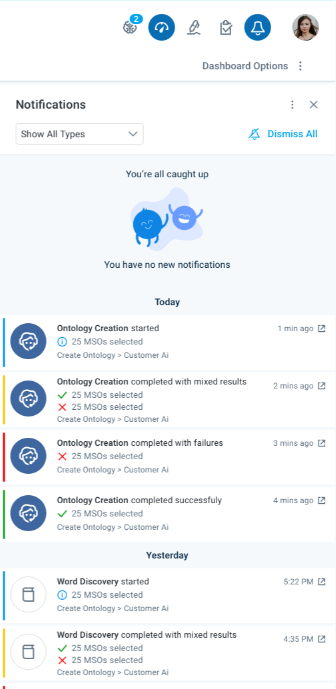 | 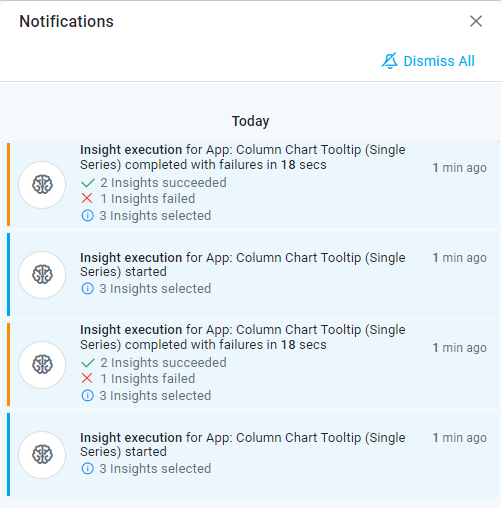 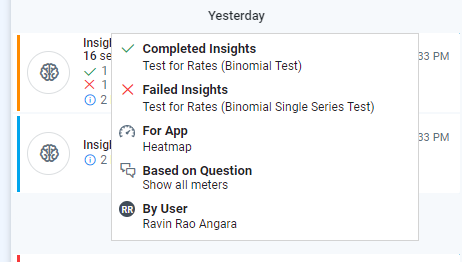 | 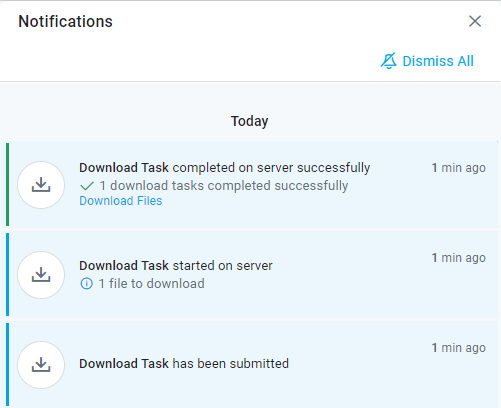 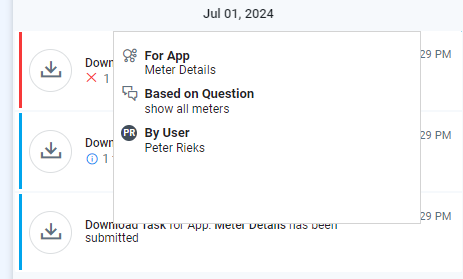 |
Statistics Notifications | Feedback Review Notifications | Federated Data - Materialized View Notifications |
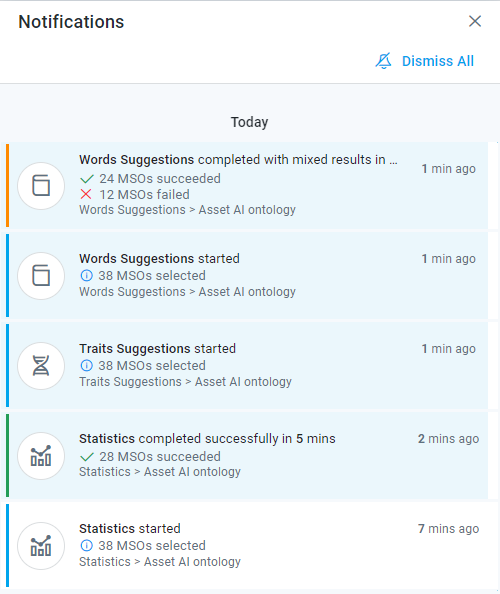 |    | 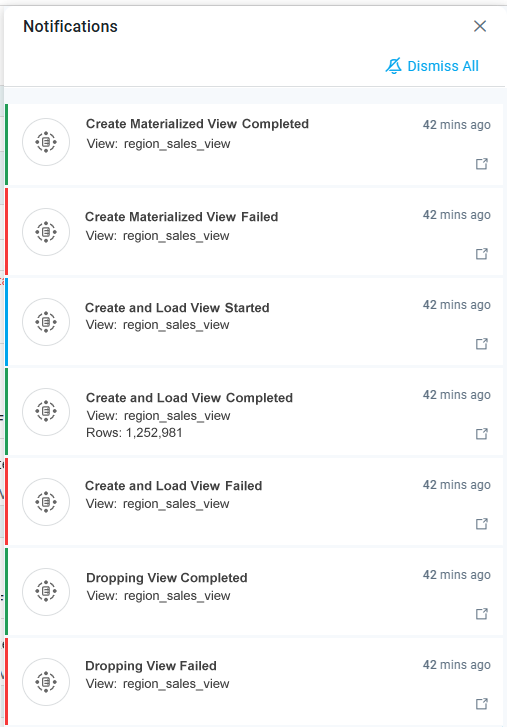 |
Search Store Notifications | ||
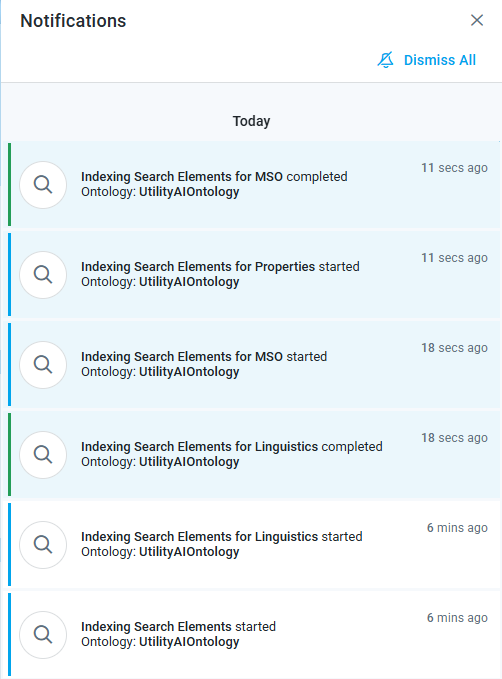 |
On Desktop
While the Notifications for background tasks will always appear in the slideout from the Bell icon in the Header, users can also select to receive Desktop Notifications. The Desktop Notifications will show the same content as the Notifications added to the slideout panel, but they will appear in the bottom/right corner of the screen and will auto-disappear after a few seconds.
Examples
Discovery Notifications | Quick Insights Notifications |
|---|---|
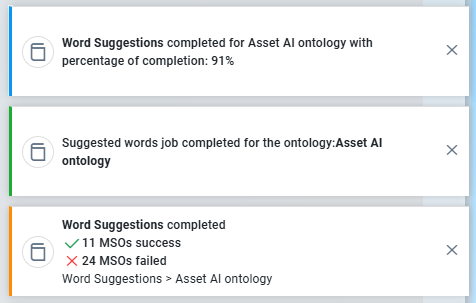 |  |
Download Data Notifications | Statistics Notifications |
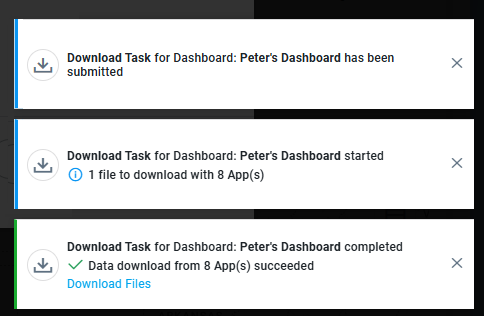 | 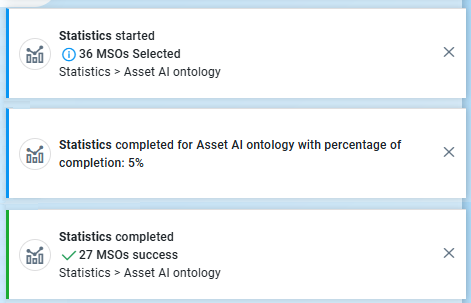 |
Desktop Notifications can be disabled and/or configured on the Notifications page of the User Settings dialog from the User menu. See User Settings.
Other Visual Cues Relating to Ontology Discovery Background Tasks
Once a background task has started, a “spinning gears” icon will be shown as a visual cue - relating to what the task is running for, ie on the Ontology card, MSO card, etc…
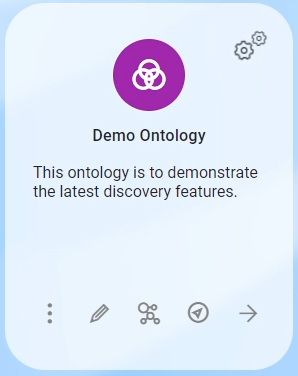
Once a background task has ended, a “decorator” icon with a number will be shown as a visual cue - typically informing the user how many objects were discovered relative to what the task was running for.

